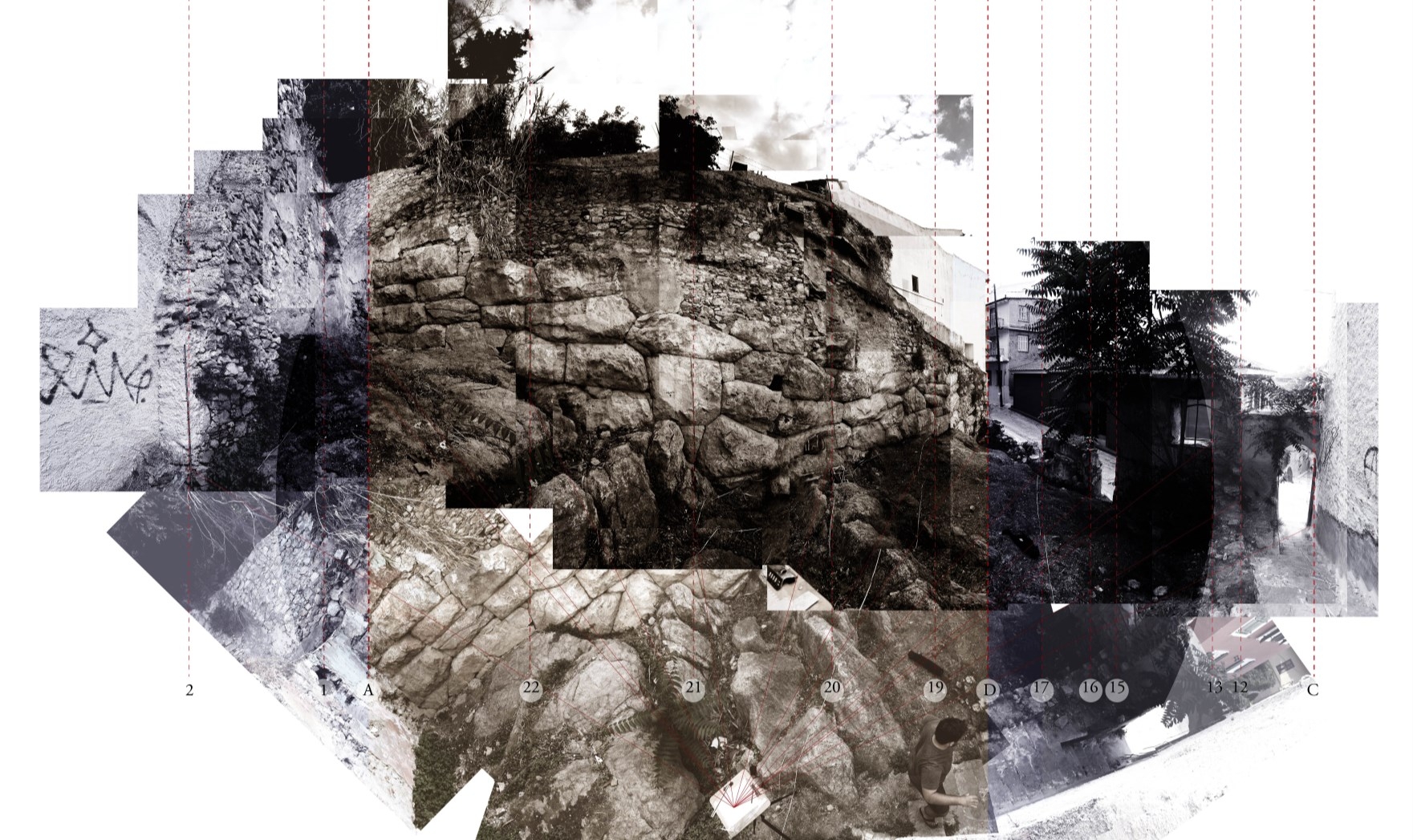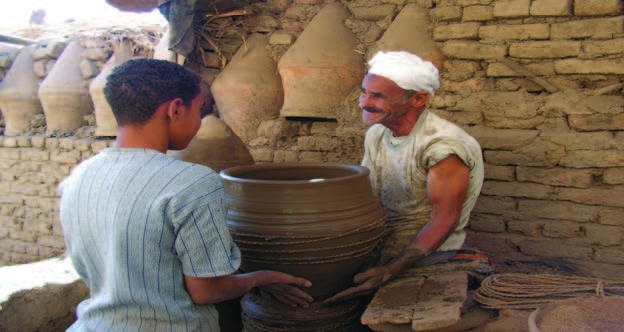Past Events
Interested in Cotsen events? Sign up for our mailing list.Speaker: Dr. Christopher Witmore, Texas Tech University
This talk attempts to formulate a different theory of time. Whereas time is often honored with an astounding primacy by history and archaeology, actual things cannot be reduced to the aftereffects of time. Rather, the rapports, exchanges, and mergers between actual entities – Bronze-Age bridges and nineteenth-century cart roads, stonemasons and ashlar masonry, potters and ancient ceramic forms – are generative of time. In developing a different theory of time, one that stands as an alternative and complement to history, archaeology expands from sorting out the time of antiquity to working with the sorting that is the antiquity of time.

Contact Matthew Swanson
Email mswanson@ioa.ucla.edu
Phone
Speaker: Dr. Norman Yoffee, University of Michigan
Old Assyrian texts from Mesopotamia, ca. 1950-1750 BCE, shed light on merchants and markets in Mesopotamia and the relationship between merchants and the Old Assyrian state. In this lecture, I review recent research on Old Assyrian trade and the implications for understanding trade in other times and places in the Ancient Near East and elsewhere. I also consider why there is a recent explosion of studies on trade by archaeologists and provide brief examples.
Contact Matthew Swanson
Email mswanson@ioa.ucla.edu
Phone
Speaker: Dr. Sonali Gupta-Agarwal, UCLA
Traditions are transmitted through teaching and learning. The manner in which knowledge relating to craft production gets transmitted can help us in understanding the causes behind cultural continuity and change. By using an anthropological approach to find teaching and learning patterns, I investigate the role of potters in
modern day pottery workshops of Egypt and India in the transmission of knowledge relating to pottery production. Employing video footage using a video annotation research tool, I discern subtle gestures and postures of potters engaged in the process of pottery production and statistically examine these to reveal patterns specific to each workshop. I transpose the method and understanding gained from the study of modern potters to the archaeological context in Karanis, Egypt. Teaching and learning of pottery making leaves recognizable markers on the vessel that can be traced metrically. My research suggests that one can trace ancient communities of practice, knowledge transfer and interpret continuity or change in material culture as part of an ongoing learning tradition.

Contact Matthew Swanson
Email mswanson@ioa.ucla.edu
Phone
NOTE: This Friday Seminar has been cancelled.
Speaker: Dr. Jeremy Mumford, Assistant Professor, Department of History, Brown University
 In 1558, in Spanish Peru, the Inka princess Cusi Huarcay married her brother, Sayri Thupa, with the blessing of the Catholic bishop of Cuzco, carrying the Inka tradition of sibling marriage into the colonial era. In 1570, King Philip V of Spain married his niece Anna of Austria, the daughter of his cousin and his sister. Each marriage reflected a royal practice of close-kin marriage forbidden to ordinary people, in Peru just as in Europe. Scholars have never seen them as comparable: on the one hand, the apparent magical thinking of the Inkas, who believed kings were descended from the Sun and should not pollute their blood with outsiders; on the other the apparent pragmatism of European monarchs, for whom endogamy was a tool in geopolitical strategy. In fact, there was pragmatism behind the magic and magic behind the pragmatism. In both kingdoms, close-kin marriage was a way that kings and queens sacralized themselves through breaking the most intimate and dangerous of laws. This research project, juxtaposing these two traditions of power and sexuality, opens a window into how entangled states create a shared political culture under colonialism.
In 1558, in Spanish Peru, the Inka princess Cusi Huarcay married her brother, Sayri Thupa, with the blessing of the Catholic bishop of Cuzco, carrying the Inka tradition of sibling marriage into the colonial era. In 1570, King Philip V of Spain married his niece Anna of Austria, the daughter of his cousin and his sister. Each marriage reflected a royal practice of close-kin marriage forbidden to ordinary people, in Peru just as in Europe. Scholars have never seen them as comparable: on the one hand, the apparent magical thinking of the Inkas, who believed kings were descended from the Sun and should not pollute their blood with outsiders; on the other the apparent pragmatism of European monarchs, for whom endogamy was a tool in geopolitical strategy. In fact, there was pragmatism behind the magic and magic behind the pragmatism. In both kingdoms, close-kin marriage was a way that kings and queens sacralized themselves through breaking the most intimate and dangerous of laws. This research project, juxtaposing these two traditions of power and sexuality, opens a window into how entangled states create a shared political culture under colonialism.
Contact Matthew Swanson
Email mswanson@ioa.ucla.edu
Phone
Speaker: Dr. Nerissa Russell, Professor, Department of Anthropology, Cornell University
Ethnography shows us that every society has some form of food taboos, often focused on the meat of particular animals. While the pig taboo, in particular, has received considerable archaeological attention in the eastern Mediterranean, there is little discussion of taboo in prehistory. The obvious reason is that, lacking textual or direct ethnohistorical evidence, it is difficult to study absence. However, taboos are likely to have affected the composition of most zooarchaeological assemblages, so we cannot afford to ignore them. While specific beliefs cannot be applied from ethnography to deep prehistory, some of the structuring principles seen in ethnoarchaeological and ethnohistoric studies can help us to identify prehistoric animal taboos. I argue that the patterning of the animal bone assemblage from Neolithic Çatalhöyük has been shaped by taboo practices. These taboos involve multiple taxa and take several forms.
Contact Matthew Swanson
Email mswanson@ioa.ucla.edu
Phone
Speaker: Dr. Pavel Avetisyan, Director, Institute of Archaeology and Ethnography, National Academy of Sciences of Armenia
This talk is dedicated to the investigation of the main concepts in World-system analysis such as border, border-line, frontier, and contact zone. Taking in to account the privileges of World-system analysis in archaeological investigations, this contribution, through demonstration of concrete cases, argues the idea of formation of “Near Eastern World-system” during the mid phase of Pre-Pottery Neolithic (PPNB) as a result of Agricultural Revolution. This oldest World-system was disintegrated during the first half of the 7th millennium BC with the establishment of new historical systems of regional significance: the result of these developments was the appearance in historical arena of Bronze Age World-systems.
Contact Matthew Swanson
Email mswanson@ioa.ucla.edu
Phone
Speaker: Dr. Jessica I. Cerezo-Román, Assistant Professor, Department of Geography and Anthropology, Cal Poly Pomona
Changing perspectives on concepts of personhood are explored by deconstructing cremation mortuary customs among the Prehispanic Hohokam of the Tucson Basin, southern Arizona, from the Preclassic to Classic periods (AD 475-1450/1500). The approach used analyzes how people were represented in mortuary rituals through three main bodies of data: (1) biological profile of human skeletal remains, (2) posthumous treatment of the body, and (3) archaeological context. The biological profile of human skeletal remains relates to physical aspects of an individual’s life. Examining posthumous treatment of the body and the archaeological context allow for reconstruction of relationships between the living and dead that are displayed through mortuary ritual. The combination of biology and culture reveals clues to how people were remembered at death by their families, peers, and community, as well as an individual's position(s) within multiple social networks. Results indicate that certain aspects of personhood did not change across time and space. However, by analyzing changes through time in cremation rituals it was possible to infer that some aspects of personhood did change. These changes in cremation practices parallel broader sociopolitical changes of increased social differentiation and complexity among the Classic Period Hohokam.
Contact Matthew Swanson
Email mswanson@ioa.ucla.edu
Phone
Speaker: Dr. Tamara L. Bray, Professor, Department of Anthropology, Wayne State University
New understandings of matter and materiality are being driven by recent theoretical developments in the realm of science, particularly physics and ecology. These evolving orientations are, in turn, contributing to new philosophical thinking on the nature of being and reality. The trickle-down effects of these developments are, in part, responsible for what has been termed “the ontological turn,” a trend clearly visible in recent archaeological discourse. In combination with new relational and symmetrical approaches guiding investigations into constitution of “the social,” the door has been opened to imagining logics and ontologies different from our own in our studies of past peoples. In this paper, I work from the basis of the imperial Inca ceramic assemblage to consider how these distinctive objects were deployed in the task of
empire-building and what insights they provide into native Andean and Inca ontology during the late pre-Columbian period. I develop the argument that imperial pots were construed as animate bodies and agents of the State based on an analysis of vessel morphology and iconography. The study brings to the fore the mutually constituted nature of the imperial Inca project, which I contend involved armies of both people and things working collectively in the construction of a new social order

Contact Matthew Swanson
Email mswanson@ioa.ucla.edu
Phone
Speaker: Dr. Bernd Mueller-Neuhof, Visiting Postdoctoral Fellow, Cotsen Institute of Archaeology
Contact Matthew Swanson
Email mswanson@ioa.ucla.edu
Phone
Speaker: Dr. Manfred Bietak, Professor Emeritus, University of Vienna Institute of Egyptology
Avaris, capital of the Hyksos, was inhabited, as we may presume, mainly by a western Asiatic population, which migrated to Egypt from the late Middle Kingdom onwards. We may call them for convenience sake Amorites as the little onomastic evidence we have, shows that they had mainly Western-Semitic personal names. We don’t know yet, if this population was homogenous. Most probably they were not, as their osteological remains show a sexual dimorphism. This phenomenon is known when wives are taken from a different gen-pool than the men. This result was attested some time ago by the physical anthropologist Eike M. Winkler from the University of Vienna. Most probably, immigrants from the Levant seem to have married local women who also did not match the Egyptian population type. Therefor they may have originated from an older substratum of immigration from different origin. We are lacking, however, the osteological material of the Egyptians who lived in the oldest settlements of the 12th Dynasty at Tell el-Dab‘a at ‘Ezbet Rushdi. These people were not buried within the town as the Canaanites, but according to the Egyptian mortuary tradition in a separate but still undisclosed cemetery, outside the town. We have various indications that they continued to live within Avaris untill the end of the Hyksos Period. Within the oldest part of the town of Avaris, at the quarter where we have evidence of a planned settlement and a temple of the 12th Dynasty, there are no intramural burials, also not from the Second Intermediate Period. The same applies to a quarter directly south of this Middle Kingdom settlement, where even during the Hyksos Period the usual burials in houses or courtyards – which are ethnical markers - are missing. What is missing in this district are finds of toggle-pins which held together the typical Western Asiatic garment at the left shoulder. Such finds were, however, collected within the immediately adjoining quarters, where obviously the Amorites lived.
Besides Egyptians and people from Western Asia from dierent periods of immigration, Avaris proves more and more to have been a multi-ethnical town. Ceramic remains from dierent parts of Nubia can be taken as evidence that also various ethnicities of Nubians lived here. As their pottery has open forms, not suitable as containers of imports, and as the roughly produced cooking pots are not attractive as imports it is likely that Nubians lived in Avaris over a long period. Some of the cooking pots even seem to have been produced of local clays. This would speak indeed for the physical presence of Nubians.
Besides the above mentioned ethnicities there is even some small evidence that Cypriots may have been
present in Avaris shortly before the Hyksos Period as Cypriot pottery was produced locally in Cypriot handmade technique.
Contact Matthew Swanson
Email mswanson@ioa.ucla.edu
Phone
- ‹ previous
- 4 of 7
- next ›


